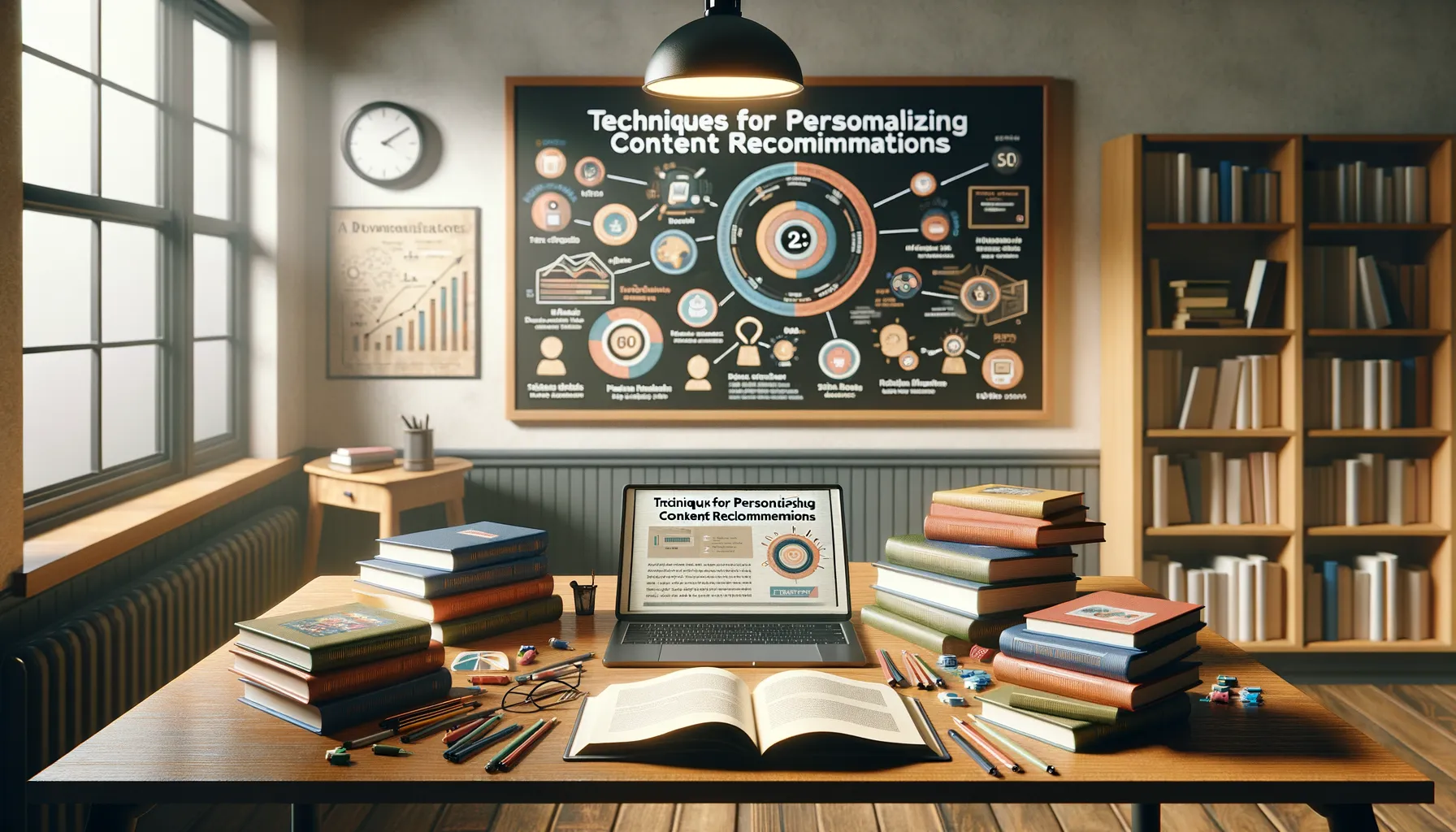Understanding the Importance of User Profiles
Why User Profiles Are the Secret Sauce
Imagine walking into your favorite coffee shop, and before you even order, the barista hands you a steaming cup of your go-to caramel latte. Feels amazing, right? That’s the magic of understanding someone on a personal level—and it’s exactly what user profiles bring to digital experiences.
User profiles aren’t just about tracking preferences; they’re about creating connections. Think of them as a treasure trove of insights—what excites your audience, what they care about, even what keeps them coming back. Without profiles, you’re essentially throwing darts in the dark, hoping something sticks.
The Real World Impact
So what does this look like in action? Let’s break it down:
- Netflix: Serving up a quirky rom-com because it knows you’ve binged the genre twice this month.
- Spotify: Dropping a perfect playlist for your Sunday downtime based on your mellow music history.
- E-commerce sites: Popping up “just-for-you” discounts on sneakers after noticing your recent scrolls.
Building user profiles is like baking a tailor-made cake for every visitor—it’s thoughtful, personal, and irresistibly engaging.
Key Elements of Effective User Profiling

Why Understanding Behavior is Your Secret Sauce
Let’s face it—data is everywhere, but not all data is created equal. The key to effective user profiling lies in truly grasping who’s on the other side of the screen. Think of your user as a puzzle: motivations, habits, quirks—the more pieces you gather, the clearer the picture becomes.
To do this, focus on actionable insights rather than just raw information. For example, don’t just collect a user’s browsing history—pair it with contextual clues like time of day or device usage. Is Jane visiting your fitness app every morning from her phone? That’s a strong indicator she values convenience during her busy mornings.
Dive into Data Categories That Matter
Not sure where to start? Here are essential elements you should zero in on:
- Demographic details: Age, location, and gender can quickly set the foundation for understanding.
- Behavioral patterns: Track actions like clicks, time spent, and favorite content types to uncover hidden preferences.
- Psychographics: Pinpoint attitudes, interests, and values—this is where user profiling gets deeply personal.
The beauty of these categories? When pieced together, they create a multidimensional view of your user. It’s like moving from black-and-white TV to vivid HD. Who wouldn’t want that clarity?
Techniques for Personalizing Content Recommendations

Tap into Behavioral Insights
Imagine walking into your favorite coffee shop, and the barista remembers not just your favorite latte but also that you grab an almond croissant on Fridays. That’s what personalized content recommendations aim to do—anticipate needs like a trusted friend. One powerful technique is leveraging **behavioral data**.
By analyzing every click, scroll, and pause, platforms can decode user habits like a treasure map. For instance:
- If someone binge-watches quirky comedies on weekends, suggest similar laugh-out-loud shows for Saturday night.
- Notice late-night searches for soothing playlists? A meditation guide before bed could be the perfect match!
This isn’t just about tracking; it’s about “getting” the user and building trust in every suggestion.
Power Up with Collaborative Filtering
Here’s where things get exciting—using **collaborative filtering**, platforms can cross-pollinate user experiences. Let’s say User A and User B both adore sci-fi novels. If User A dives into a new dystopian epic, recommend it to User B too! It’s like matchmaking for hobbies and interests.
But it doesn’t stop there. Pair this tech wizardry with **natural language processing** to dig deeper into what users *really* enjoy—plotlines, styles, or even specific authors. Personalized suggestions then become less about algorithms and more about emotional connection. Where tech meets intuition, magic happens.
Challenges in Implementing Personalized Recommendations

When Data Turns Into a Puzzle
Implementing personalized recommendations might sound magical, but here’s the kicker—it’s like solving a thousand-piece puzzle without a reference picture. The first challenge? **Data Overload**. Imagine collecting mountains of user data—clicks, search terms, time spent, preferences—and then trying to make sense of it all. Too much noise, and you end up with chaos instead of clarity.
Then there’s the issue of **accuracy**. Let’s say a user clicks on a cat video once because their friend sent it. Boom! Suddenly, your system thinks they’re the ultimate cat lover. Personalization fails when preferences go misinterpreted. It’s like baking cookies and ending up with a cake. Not bad, but not what was expected.
The Tech Hurdles That Nobody Warned You About
Deploying recommendation systems also comes with a fair share of tech roadblocks:
- Scalability: Sure, it works for 100 users, but can your system handle a million? Small cracks turn into big gaps fast.
- Real-time Processing: People expect suggestions *now*. Delays are kryptonite to user experience.
- Privacy Concerns: Users want tailored content, not to feel like Big Brother is watching. A finely tuned balance is key.
Between overzealous assumptions and the constant pressure to evolve, implementing recommendations is more art than science—an art that demands precision, patience, and creativity.
Future Trends in User Profile-Based Personalization

Where Technology Meets Intuition
The future of user profile-based personalization is like a fast-moving train, taking us into uncharted territories where technology blends seamlessly with human intuition. One big trend? The rise of **AI-driven adaptive profiles**. Imagine a system that doesn’t just store past user behavior but actively learns and evolves as preferences shift. For example, today you might be binge-watching thrillers, but next month, when the holidays roll around, your cravings for feel-good comedies could take center stage – and the system knows.
We’re also seeing a spotlight on **context-aware personalization**. Think about it: what resonates with someone at 8 AM on a Monday morning might fall flat at 8 PM on a Saturday night. By factoring in real-time data like location, mood, and even weather, content can feel less like a cold algorithm and more like a thoughtful friend.
- Real-world example? Say you’re stuck in traffic on a rainy day – your playlist gets updated to soothing tunes or maybe a comedy podcast to lighten the mood.
- Or, if you’re researching “quick dinner recipes” at 5 PM, those recommendations will serve up simple dishes rather than three-hour gourmet challenges.
Hyper-Personalization Meets Privacy
Here’s the twist: as personalization dives deeper, **data ethics and privacy** are coming into sharp focus. We’re not just talking GDPR compliance – users now demand transparency and control over their own digital selves. Future systems are likely to hand the reins back to the individual, letting them actively shape their experience.
Imagine toggling between levels of personalization like you’d adjust a thermostat: want ultra-specific recommendations? Slide it all the way up. Prefer broad suggestions for a bit of serendipity? Dial it down. This kind of intentionality puts **trust** front and center – no creepy overreach, just genuine value.
The horizon for personalization isn’t just about sophisticated tech – it’s about feeling seen, understood, and respected as individuals.
